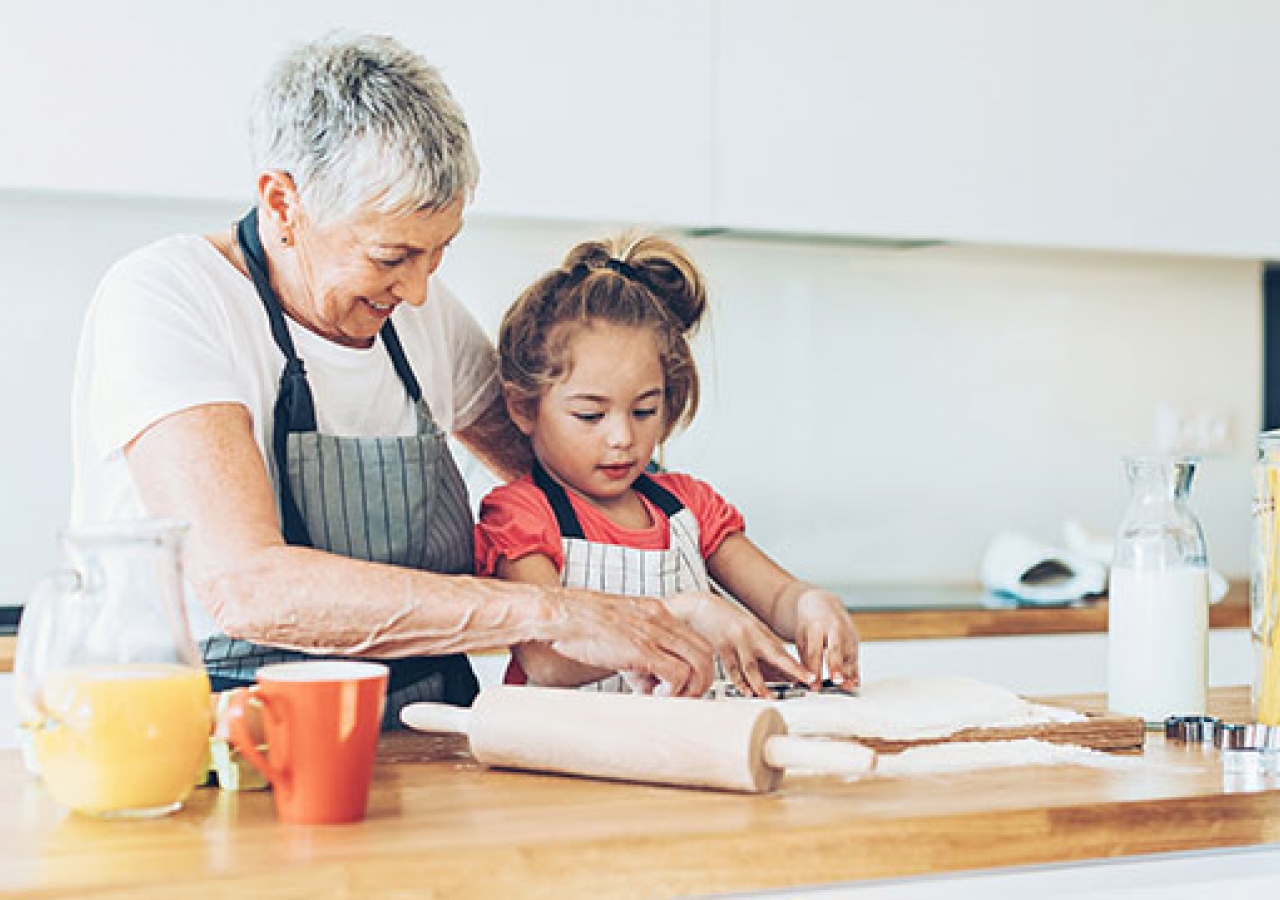As a suggestion, try these 2 simple recipes.
Play dough recipe
- 2 cups of plain flour
- 4 tablespoons of 'cream of tartar'
- 2 tablespoons of cooking oil
- 1 cup of salt
- 2 cups of boiling water
- Food coloring
Mix all ingredients together and knead till it doesn’t stick to your fingers. Then it is ready for children to use and let their imagination fly while strengthening their fine motor skills. You can store it in the fridge for several weeks.
Banana Dippers - Ingredients:
- Bananas - cut in chunks
- Coloured sugar
- Cinnamon sugar
- Peanut butter
- Chopped nuts
- Coconut
- Ice cream sprinkles
- Ccrushed cookies
- 200g is chocolate chips
Directions:
- Peel the bananas and slice into several pieces.
- Place the chocolate chips in a microwave safe bowl and cook on high until melted - about 1 minute, stirring every 30 seconds until smooth.
- Dip the banana slices in the chocolate, then roll them in other ingredients as desired
Discuss with your child in which sequence you have followed the recipe and let your child write and draw about the recipe using drawings and letters.
A kitchen is a learning lab for children. While kneading, tossing, pouring, smelling, cutting, and feeling foods they have fun and learn, without being aware of it.
Math activities
- Start a counting collection about any item that interests your child (shells, coins, beans, etc). Get empty jars and start collecting these items. You may count them as you go along. Later you can use for counting activities and estimation jars. Continue to create different collections untill your child’s is interested.
- Card games. Playing cards are a great way to learn number recognition and subitizing.
- Sort the playing cards by removing all of the kings, queens, jacks and aces (we only want number cards).
- Choose one suit of cards (hearts, spades etc.) Find all of the numbers in that suit and stick them to the wall.
- Mix up the rest of the deck of cards and have your child sort them out buy number and sticking them on top of the corresponding number on the wall.
Reading & Role Play
Read your child’s favorite story and role play it. Beside promoting quality time within families, children get to play out real life situations which helps with problem solving, builds self esteem and confidence, creativity, communication skills and physical manners.
Examples: acting out real life situations, such as grocery shopping, driving, camping gives them the opportunity to learn about real-life environments and circumstances at their own pace.
When playing doctors, builders, teachers, police and shopkeeper is the perfect setting to encourage empathy between children. It increases a child’s ability to positively interact with others, giving them the responsibility to act accordingly while doing what children are best at: playing!
These are only a few suggestions out of many other fun educational activities. I hope you will find them helpful and will implement some of them. In case you came up with your own ideas, remember to share with us and send us pictures of you and your children having fun during these hot summer days.
Wishing you plenty of play with your offspring!
Karima Juma







